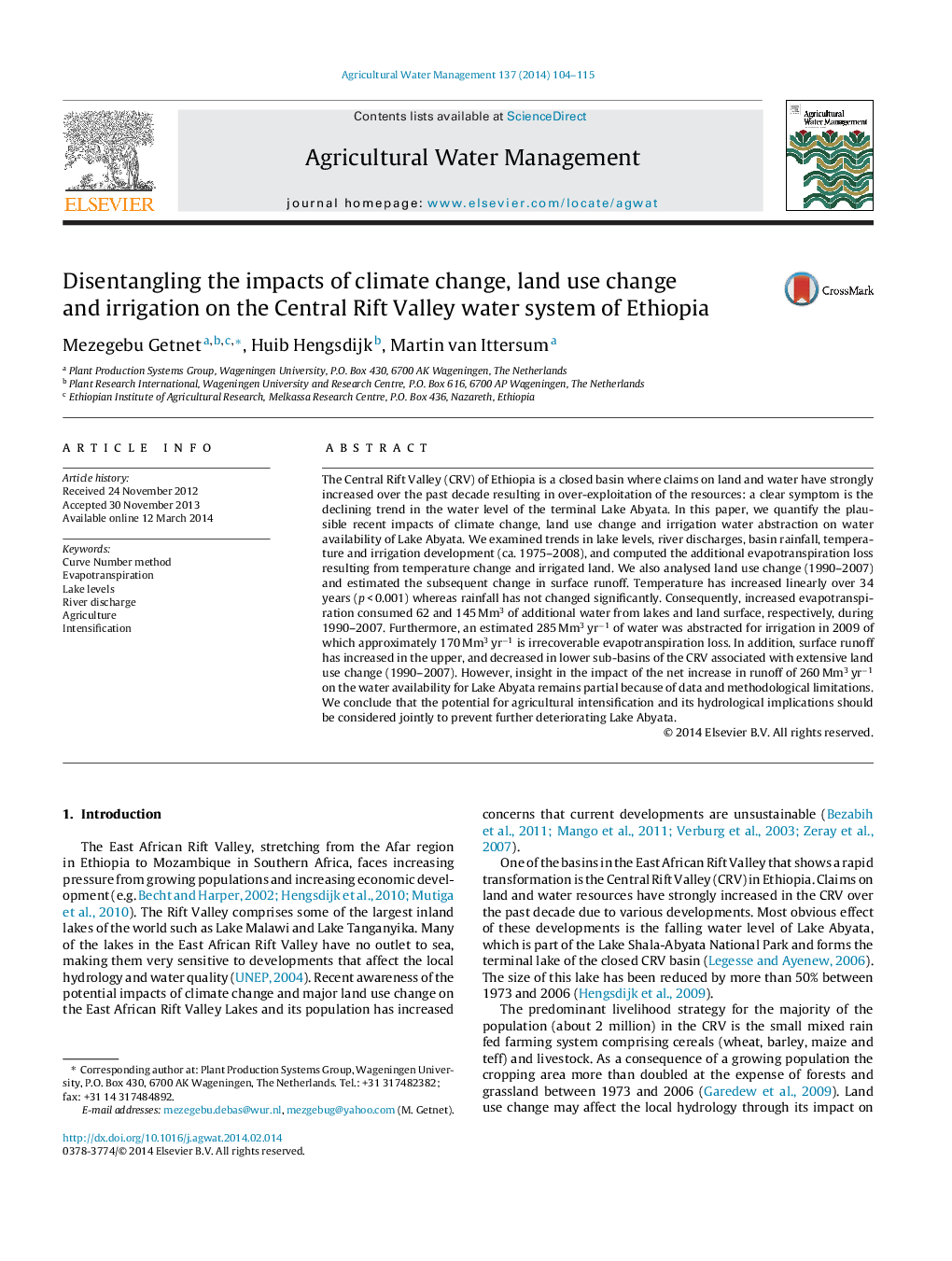| کد مقاله | کد نشریه | سال انتشار | مقاله انگلیسی | نسخه تمام متن |
|---|---|---|---|---|
| 4478770 | 1622942 | 2014 | 12 صفحه PDF | دانلود رایگان |
• Quantified impacts of climate change, land use change and irrigation.
• Temperature has increased significantly whereas rainfall has not changed.
• Increased ETo consumed 207 Mm3 yr−1 more water (1990–2007) of lakes and land surface.
• Land use change affected runoff pattern; caused net runoff increase of 260 Mm3 yr−1 (1990–2007).
• Irrigation water abstraction increased from ±20 to 285 Mm3 yr−1 (2002–2009).
The Central Rift Valley (CRV) of Ethiopia is a closed basin where claims on land and water have strongly increased over the past decade resulting in over-exploitation of the resources: a clear symptom is the declining trend in the water level of the terminal Lake Abyata. In this paper, we quantify the plausible recent impacts of climate change, land use change and irrigation water abstraction on water availability of Lake Abyata. We examined trends in lake levels, river discharges, basin rainfall, temperature and irrigation development (ca. 1975–2008), and computed the additional evapotranspiration loss resulting from temperature change and irrigated land. We also analysed land use change (1990–2007) and estimated the subsequent change in surface runoff. Temperature has increased linearly over 34 years (p < 0.001) whereas rainfall has not changed significantly. Consequently, increased evapotranspiration consumed 62 and 145 Mm3 of additional water from lakes and land surface, respectively, during 1990–2007. Furthermore, an estimated 285 Mm3 yr−1 of water was abstracted for irrigation in 2009 of which approximately 170 Mm3 yr−1 is irrecoverable evapotranspiration loss. In addition, surface runoff has increased in the upper, and decreased in lower sub-basins of the CRV associated with extensive land use change (1990–2007). However, insight in the impact of the net increase in runoff of 260 Mm3 yr−1 on the water availability for Lake Abyata remains partial because of data and methodological limitations. We conclude that the potential for agricultural intensification and its hydrological implications should be considered jointly to prevent further deteriorating Lake Abyata.
Journal: Agricultural Water Management - Volume 137, 1 May 2014, Pages 104–115
